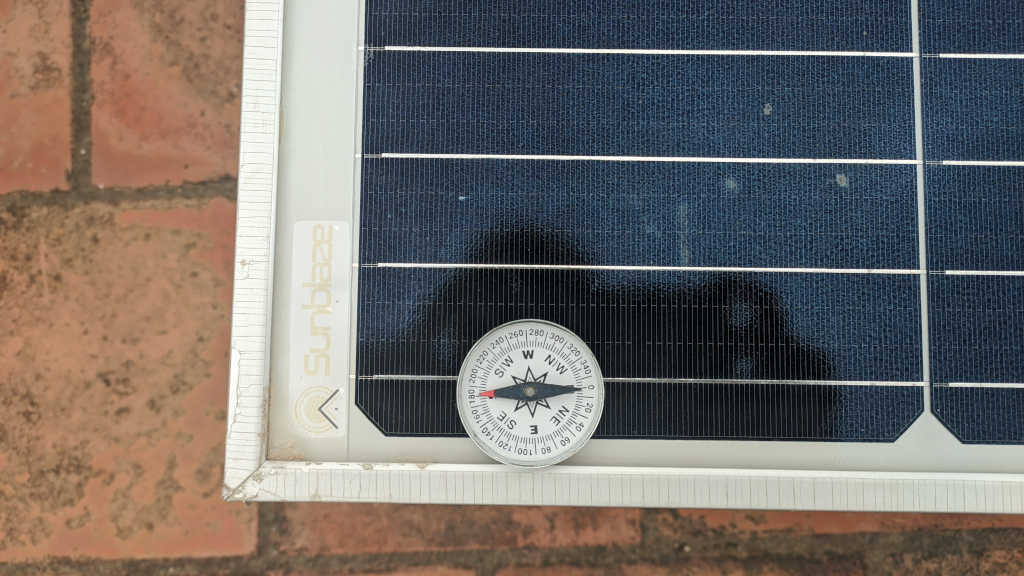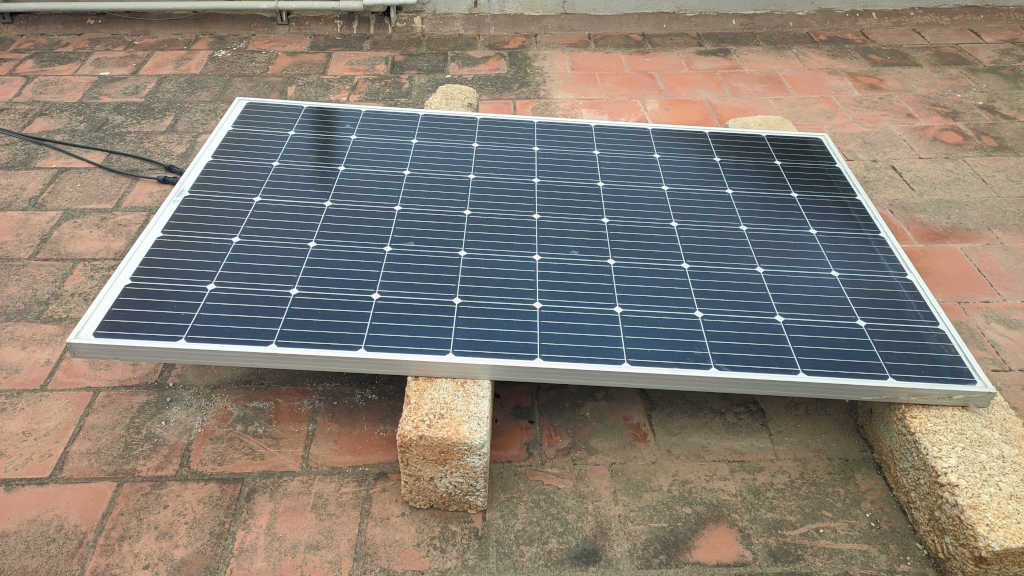Optimal Tilt For Solar Panels
You might have noticed that in my DIY solar panel setup, the mounting structures were conspicuously missing. That was not a mistake. Actually I looked at many solar panel mounting structures, but most of them are not adjustable. The few ones I found were either too expensive or for smaller panels. So I decided to go find a local metal works fellow and get it built. However, thanks to COVID lockdown and such I decided to go with something simple -- jugaad style instead. More on that later. But first, why is the tilt so important?
Why is the tilt of solar panels important?
Solar panels produce the maximum amount of energy when the sun is perpendicular to them. So as the run goes around the sky, you will need to point the panel perpendicular to produce the maximum amount of energy. The is not possible until you have an automated system with motor tracking the sun. The next best thing you can do is to keep the panel perpendicular at least when the sun is at the highest point in the sky.
But unless you are living exactly on the equator the angle of the sun in the sky changes through out the year. Here in Bangalore which is on the northern hemisphere, the angle of the sun is towards the south during winters and slightly to the north in summers. So if I can at least change the angles each month, I can maximize the power.
Solar panel angle calculator
I found one useful solar angle calculator for Bangalore. I am sure there are more and better calculators but this does the work for me. It tells you the angle you need to tilt your panels for each month. So every month I check the calculator, get to the roof and change the angle. That way I try to maximize the power generation with as little effort as possible.
Use the calculator to find the angle for your city, Bangalore in my case. Then I find the angle it recommends for the month. The calculator gives the angle from vertical, but we need the angle from horizontal. For example for July it is 93 degrees from vertical. A little bit of school geometry will tell you that the angle from horizontal will be 93 - 90 = 3 degrees. Then some high school trigonometry will tell you how high one end needs to be above the other end.
Basically I know the length of the panel to be 164 cms which is the hypotenuse. Since sin (3) = opposite / hypotenuse, I got the height of opposite to be 8.6 cms approximately. Also the angle is greater than 90 degrees from vertical, which means the panel has to be angled due north. If I make the south end of the panel 8.6 cms higher than the north end, that will do.
My setup to change panel angles
My terrace has a lot of open space, so there is no possibility of a shadow falling on the panels even if they are not standing tall. So we don't really need tall mounting structures. We got some construction bricks and placed them under the panel. The first thing I did was to make sure the panel is facing north south using a compass. I know that kind of accuracy is an overkill but hey, I have been known to have OCD :).

Whenever I needed to adjust the angle of the panels I would move the bricks back and forth or make them lie flat or tall as required. Perhaps a picture might help, so here goes.

Of course the bricks will not be able to give enough height by winter when I need to raise one end by 3 feet. So I might have to get that structure made before winter comes around.
Conclusion
That is my setup as of now. If I purchase more panels I will need more bricks :). The only issue is that I hope the panel does not fly away when there are monsoon winds. It does not look like that is a possibility, because the panel is quite heavy. But a gust of wind in the right angle at the right force can be trouble. So in future I might invest in a proper mounting structure that is glued to the ground with cement.
I have been changing the angles every month since February and I have to tell you that the results are looking quite good. I will write another post on how many units I am saving with the lone panel.

